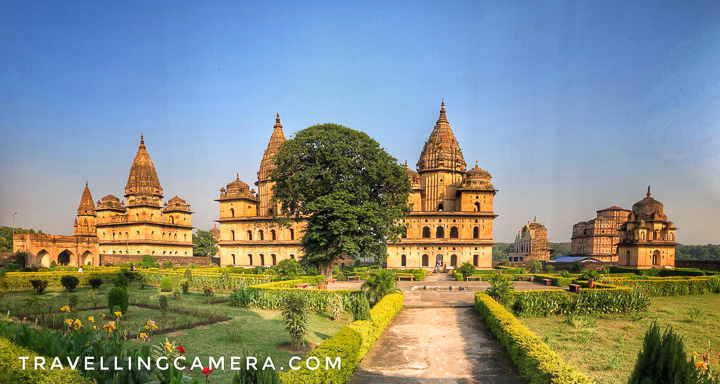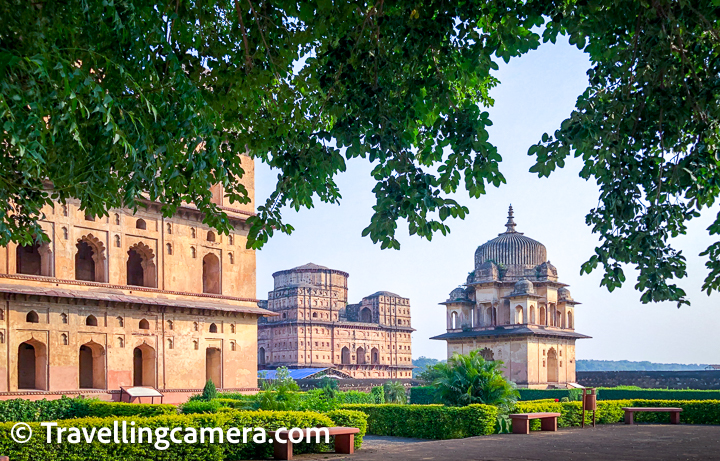The breathtaking Chhatris of Orchha, Madhya Pradesh || Gorgeous Cenotaphs that honor generations of Bundela Rulers
Some of the the most misunderstood monuments anywhere are the Chhatris. People often confuse them with tombs or samadhis, and assume that they are built on the site where the person to which the chhatri is dedicated was cremated or is buried. However, that is not the case. Indeed Chhatris are associated with a notable person who has passed on. However, they are built to commemorate the person, and do not house the remains of the person in any form. In that sense, the best English word to describe them is cenotaph.
Chhatris are a common feature in Rajasthan and Madhya Pradesh, and some can also be found on the outskirts of Bhuj, dedicated to some of the Jadeja Rules. Chhatri's are features of Indo-Islamic architecture. Outside India, a couple of Chhatris can also be found in the United Kingdom. One such Chhatri is in Brighton, dedicated to the Indian Soldiers who died in the First World War. And the other is near Bristol, to commemorate Raja Ram Mohan Roy, who died in this city.
Related Blogpost - Celebrating special Dussehra at grand Ram Leela Pandal of the town where Lord Ram is still worshipped as a king - Orchha, Madhya Pradesh
The Chhatris in Orchha are quite beautiful and the fact that the lawns around them are very well maintained, adds to their grace. The lawns are also home to several species of birds. I spent considerable time searching for a particularly noisy parrot and then ultimately spotting a little owlet instead.
There are about 15 Chhatris in Orchha, dedicated to generations of Bundela Kings who have ruled Orchha since the early 16th century, such as Raja Vir Singh Deo, Jashwant Singh, Sujan Singh, Bharti Chandra, Indramani, etc. Some of the them, like the one dedicated to Raja Vir Singh Deo, the King whose reign is said to be the golden era of Orchha, are located right on the banks of Betwa river on Kanchana Ghat.
Related Blogpost - Orchha, Madhya Pradesh || The hidden land that adopted Lord Ram as their King in the 16th Century
In fact, one of the best spot to view the Chhatris is from the opposite bank of Betwa river. You need to cross a narrow bridge to reach here. On this bridge, at one time, only one car can pass. So you need to keep a watch on the other end of the Bridge and only start driving if no one else is driving towards your end at that point in time. This area falls in the Orchha Wildlife Sanctuary that is on an island formed by the divergence and convergence of Betwa River. The view of the Chhatris from the rocky banks of Betwa in the wildlife sanctuary are breathtaking at the time of sunset.
Related Blogpost - Suhania Kakanmath Temple in Morena region of Madhya Pradesh, India
We reached here at the right time and it was quiet and peaceful, except for the the voice of a policeman with a great sense of humor, who was making announcements on the loudspeaker at the opposite bank. He was asking people to move away from the rocks in the current. While doing so, he was also sharing his views about the selfie culture and how mobiles are the reason behind our society going into ruin, etc, all on loudspeaker, much to the amusement of the people on the ghats.
Related Blogpost - Spots and Stripes at Panna National Park || Guess what we saw at the Tiger Reserve
Almost all the cenotaphs are built on raised platforms and are multistoried, except for a few. And as is typical to most chhatris, the ceiling is domed or conical. The chhatris are visible from quite a distance and are among the most photogenic monuments of Orchha. Do take out at least half a day to explore the chhatris, and do read about them beforehand so that you know exactly what you are looking at. And a visit to the opposite bank for a sunset shot of the Chhatris too is highly recommended.
Related Blogpost - Khajuraho one day Itinerary - How to spend a day around this World Heritage City of Madhya Pradesh in best way ?
If you liked this post and found it helpful, I would request you to follow these things when traveling -
1. Manage your waste well and don’t litter Use dustbins.
2. Tell us if you went to a place and found it hard to locate a dustbin.
3. Avoid bottle waters in hills. Usually you get clean water in hills and water bottles create lot of mess in our ecosystem.
4. Say big no to plastic and avoid those unhealthy snacks packed in plastic bags. Rather buy fruits.
5. Don't play loud blaring music in forests of jungle camps. You are a guest in that ecosystem and disturbing the locals (humans and animals) is not polite.









.jpg)
Comments